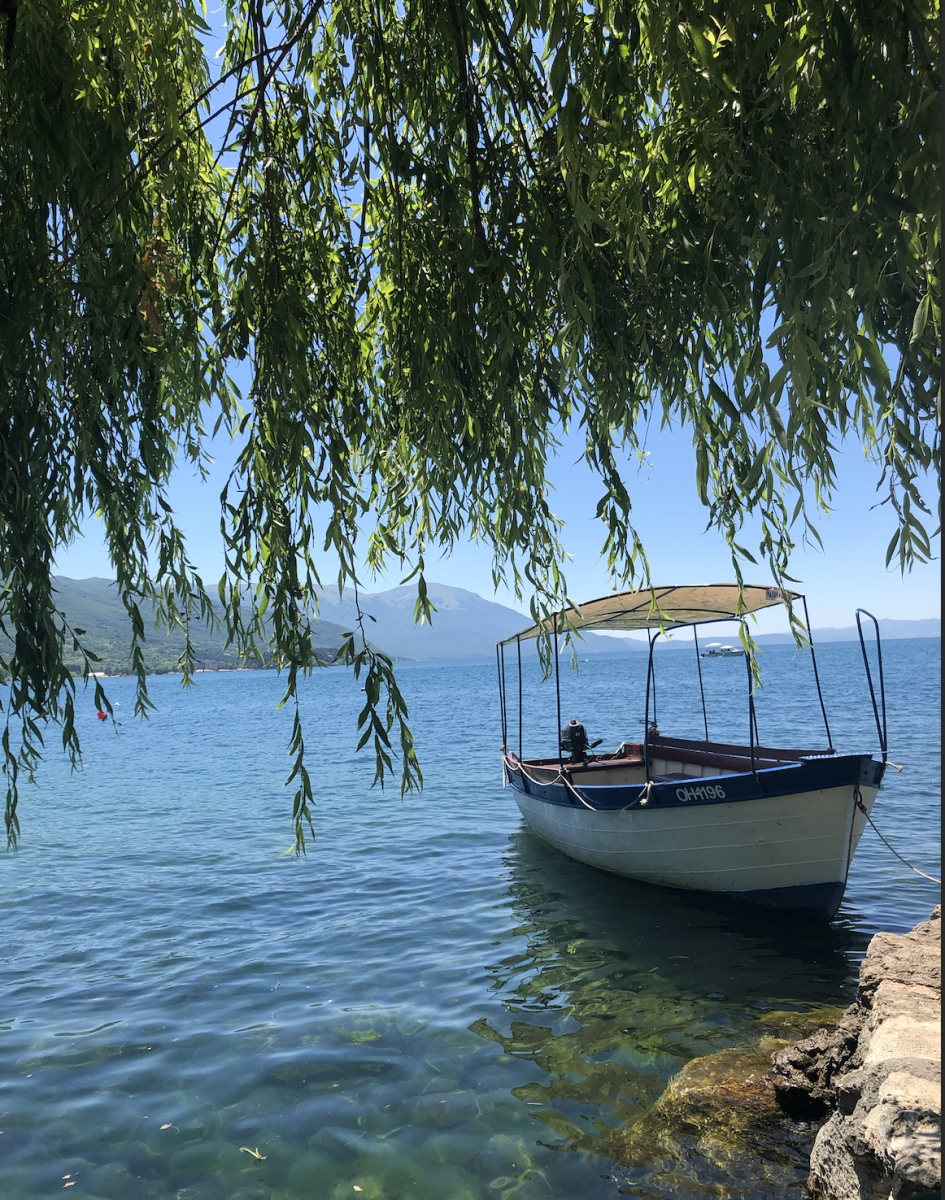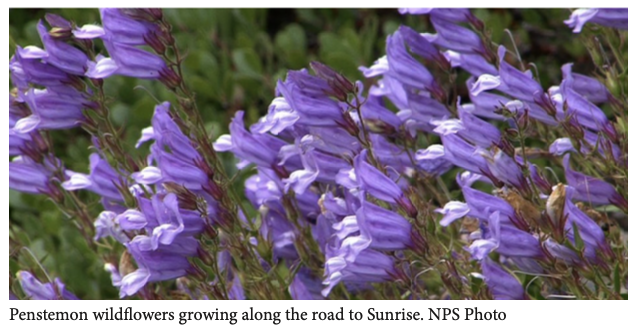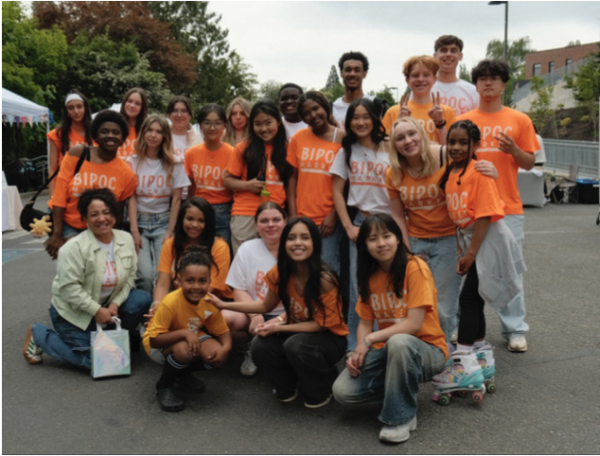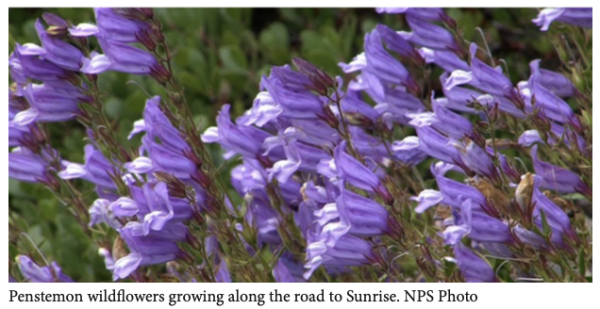Day 5: Sapa
March 15, 2019
About Sapa Sisters and our trek
by Abby Givens
Sapa sisters is a social enterprise that was started in 2009 by the artists Radek Stypczynski, Ylva Landoff Lindberg, and four other members of the Hmong tribe, Lang Yan, Lang Do, Chi, and Zao. The company’s founding purpose was to provide decent jobs and wages to women in the Sapa region. Ylva, after the death of Radek, has had the responsibility of connecting the Hmong women with tourists using the Sapa Sisters website, as many of the Hmong women cannot read or write english. Their spoken English, however, is great.
During the summer, their peak season, the guides work 6-7 days per week and in winter they work about 2-3 days per week. Sapa Sisters employs 19 women during peak season, one of them being our tour guide, Ru.
Ru is a 23 year old resident of a village outside of downtown Sapa as well as mother of three. Her parents and husband are rice farmers. Her husband also takes care of their children, while she makes money taking tourists on treks.
We began our trip at 9:30am on March 13th. We walked through downtown Sapa to a trail that wound us up and through the rolling hills. The terraces of the rice fields brought the hills alive. The clouds hung over the hills, making the view slightly muddled yet still incredibly beautiful.

We trekked up and down following the winding dirt path, with the help of several Hmong women who had joined us on our hike. Each women stayed close to one of us and gave us a heart-shaped craft made of plant held together with twine. They would hold out their hand whenever there was a specifically challenging section of the trail. The women were dressed in clothing traditional to the Black and Flower Hmong tribes, and frequently asked us to buy small goods they had brought with them in baskets they carried on their backs.
We trekked a total of about 10 miles, and with our exhaustion came a deep respect for the Hmong women who frequently embark on this journey.
Women’s Role in Sapa:
by Julia Henning
In our conversation with our guide, Ru, we discussed a lot about the role she plays in her family. Ru said that, generally, women in her village give birth at home with only their mother and mother-in-law. In addition, when a woman marries, she goes to live with her husband’s family and takes care of them, but she is not allowed to support her own parents by means of food. In Ru’s case, it meant that she wanted a son so he and his wife could come take care of her when she got older. At the moment, she has 3 daughters, so she is hoping her next child will be a boy and her last. She said that if the most recent child had been a boy, she would not be having anymore children. It showed us how much it means to her to be taken care of in her old age and continue the traditions.

Because Ru works for Sapa Sisters, she makes majority of the money for her family. It was surprising for us to hear how although she makes the most money, she can’t own land and have her name on any properties. But for Ru, she would rather switch positions with her husband and be at home taking care of the children and cooking food.
Black Hmong Customs
by Nina Doody
On Wednesday, March 13 Inkwell set off to trek in Sapa Vietnam with a local tour guide business called Sapa Sisters. Our guide, Ru, is part of the Black Hmong tribe. The Hmong tribe as a whole is comprised of four different groups: the Black, Green, White, and Flower tribes. To distinct from each other, the tribes differ in traditional dress. Ru told us she can tell who belongs to what tribe based on their clothing.
As part of the trek, we had the opportunity to have lunch in a traditional home. In the particular village we stopped in, the population was roughly 2000, all belonging to the Black Hmong tribe. During lunch we asked Ru some questions and her answers provided insight to what life is like.
When talking, Ru referred to the Vietnamese as an ethnicity while we typically consider Vietnamese a nationality. But that wasn’t the only thing that struck Inkwell. The traditional life as a person in the Hmong tribe is vastly different than the life we are accustomed to.
For instance, marriage happens between the ages 15-18. This was a shock to us as we almost all fall in the age group and are nowhere near getting married. With marriage comes pregnancies, Ru who is 23, already has three daughters — one of whom was only six months old.
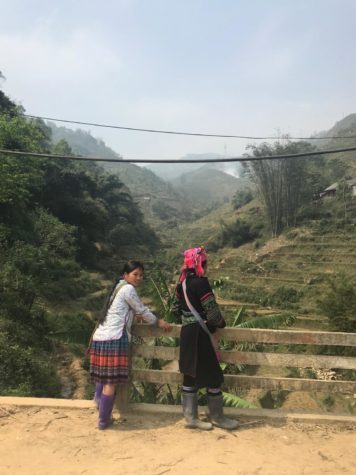
Inkwell asked about homosexual relationships and their role in the Hmong tribe, but Ru gave off the impression that they don’t happen and possibly are not accepted. On the note of marriage, we learned that tribes used to not be allowed to marry each other, but this has changed and is allowed now. Also, the Hmong people used to strongly look down upon a baby before marriage, even to the extent of killing the mother, but again this is not the case today.
Because marriage is significant to the Hmong tribe, there are many traditions that are different from what we know. The wedding ceremony is done by the parents, and the husbands family brings money and or goods. There are no rings or vows. However, divorce is very uncommon, and at one point in history, it wasn’t allowed.
Value of Money
by YoungSeo Jo
In the beginning of our trekking journey, Ru told us of how rice in the villages weren’t sold and exchanged for money. This made me curious: in a village that’s so far off and disconnected from the rest of the world, does money even matter?
According to Ru, money matters everywhere in the world. However, the value of money differs drastically from what is normal to us. Money is not depended upon for necessities like food, but is spent on luxuries. Although, this makes money no less valuable.
Ru explained to us how money was used to buy things that the villagers cannot make. For example, a pair of sturdy shoes and a warm jacket purchased once a year. Otherwise, the villagers make do with what they have. We were able to spot most of the villagers with worn down or handmade clothes.
As rice isn’t used as a source of income, villagers sell small handmade trinkets to earn money. Our group was joined by village women who wanted to sell us these trinkets, but because were weren’t interested in purchasing anything, they ended up helping us with the tough trekking paths. We were also approached by children with bracelets hoping to earn a dollar for each.

Money also seemed to be a source of conflict. According to Ru, the Sapa Sisters were shunned by other members in their tribe and villagers because they earn more money than an average villager.
Animals of Sapa
by Gabrielle Krieger
In Sapa, on Inkwell’s trek, we saw many animals roaming free on the paddies and streets alike. Quite a few were work animals who belonged to the local families. They had water buffalos to plow the paddies to aid in the production of rice, of which the families relied on for food. According to Ru, water buffalos are very important for production of food to the Hmong people but are also very expensive, so families sell the old ones who can no longer work to people who want them for meat. They then use the money they’ve earned from the old buffalo to buy a new and younger one.
Many pigs, roosters, goats and chickens also wandered around the villages and mountain, most often with their babies in tow. Walking around, we only saw one horse, which is an animal most often used there to eat the meat of.
As far as pets go, gray cats and Shiba Inu mixed dogs seemed to be the most popular. They could be seen wandering the streets like strays. According to Hmong tradition, they are not given names but are referred to by the color of their fur. At the house we ate lunch at, there were several cages of beautiful birds. Ru told us that most of them were hatched from eggs to be pets, but one of the birds was caged to keep it from eating food in the house.
Lunch Experience
by Samantha Salamone
After quite a few hours of hiking the beautiful Sapa terrain, we ended up in a village of the Black Hmong people to eat lunch in a local home. As we approached the house, we were greeted by puppies, not local to the home, but to the village. There were puppies and dogs all around and we were also greeted by small toddlers walking around. This home was different from what we were used to. It was built by the local people, and had hardly any modern appliances, such as lighting, central air or heating. The grounds were not hardwood or carpet, but part of the earth. There was only one bed from what we could see, for a family of at least 4. There were holes in the roof and the walls, which means they must be wet when it rains. It was mostly dark aside from the sunlight and the two lightbulbs we saw.
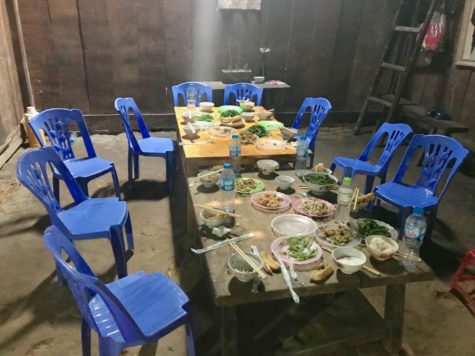
They did seem to have a rather old television and a place to charge cell phones, aside from the other missing appliances. The house did not have much security, as if they weren’t really worried about it. The only types of crimes they were worried about were stealing motorcycles, a typical form of transportation in the village, and all over Vietnam. There were different sizes of helmets hanging on the walls of the house.
The house also had a loft which was used primarily for storage. There was a huge basket full of the family’s rice stock for the year. It looked like there must have been tons up there, along with more bags full of rice as well. The table we sat at were very small, and we sat in small plastic chairs and stools that were most likely made for small children. We were given small, empty bowls and chopsticks, and the food was placed in distinct plates and pots in the center. We served ourselves rice along with potatoes, peppers, chicken, vegetables, and green beans, which was very popular among our group. All of the food was amazing, and they were very welcoming, telling us not to be shy and eat, which we did happily.
During the meal, we got a chance to ask her any questions we had about her culture, which was extremely interesting. The restroom was interesting as well. It was basically an outhouse – a stall with a hole in the ground, intended for you to squat above. This of course was a new concept to us, though it wasn’t terribly difficult.We were lucky that one of our group members brought a roll of fillet paper, as there was none. There weren’t any sinks to wash either. I’d image cleansing in the stream is what the locals do, but we used wipes and hand sanitizer. The whole experience of being welcomed into someone’s home in a different culture was incredible. It was amazing to see the differences in how we live and how they live, and the overall way of life of this culture.
Ru’s Aunt’s Story
by Allison Fitz
Ru shared with us a personal story about the human trafficking of women in her village.
At eighteen years old, her aunt, the youngest of eight siblings, was kidnapped from their village and taken over the border into China. She was sold into a marriage with a Chinese man and lived a life to serve him, especially in providing a baby son.
Seven months into her pregnancy and two years into living in China, Ru’s aunt overheard her husband tell his friend that once she birthed his child, he would sell her to him because she wasn’t pretty anymore. Knowing his intentions, Ru’s aunt stole money from her husband’s and escaped back to her village in Vietnam. She then became a founding guide for Sapa Sisters. Today she lives with her new husband and two children. Hearing this story, I was amazed by Ru’s aunt’s bravery and strength.
Ru told us that if her aunt’s Chinese husband ever tried to come back to their village for revenge or recapture, the Vietnamese government would protect her.
Ru also said that some women in small Vietnamese villages voluntarily leave to China either to escape a “bad marriage” or in hopes of a better life, off the farm. According to her, these women usually end up doing domestic work for their Chinese husband.
Modernity of Sapa
by Gabrielle Krieger
As soon as we entered Sapa, the juxtaposition between modern and old methods and contraptions became obvious. While some ways of living, such as a rice grinder fueled by stream water and manual sewing machines, remain, new construction sites and speedy motorcycles have become a part of everyday life. Inventions such as electricity, which was brought to Sapa eight years ago, has made positive impacts on the community through giving them light sources. However, Ru also recognizes the danger of some of these new inventions, such as games on the Internet, which she says is addictive to children and takes their attention away from school.
Tourism has also fueled change in Sapa’s culture. It has created a steadier revenue stream for small businesses who sell food and Hmong crafts and has encouraged the building of safer and less narrow roads. Yet, there are also downsides.
A very threatening modern invention to the beauty of Sapa has been the introduction of plastic. Walking through the roads of Sapa, we saw plastic scattered on the rice paddies, streams, and roads. According to Ru, the Sapa people don’t know what to do with it because it can’t be burned, like they burned their previous biodegradable waste.
Ru’s Hope for Her Children
by Jade Cheatham
In the future, Ru aspires for her kids to live a different life than hers, and many other people in her tribe. Most people in the Hmong tribe are farmers working in the rice field. Although Ru does make a steady income working with the Sapa Sisters, she hopes that her three daughters go on to get jobs that will pay more. Ru told us that she hopes that her daughters become either a doctor, teacher, or police officer. She said that these jobs are hard to get because it’s so rare that people in her tribe go on to university. Education is a large part of the Hmong tribe. All children must go to school and primary school through high school is free. Beyond that you have to pay for, which is why it’s not very common for a lot of people to continue onto university.




